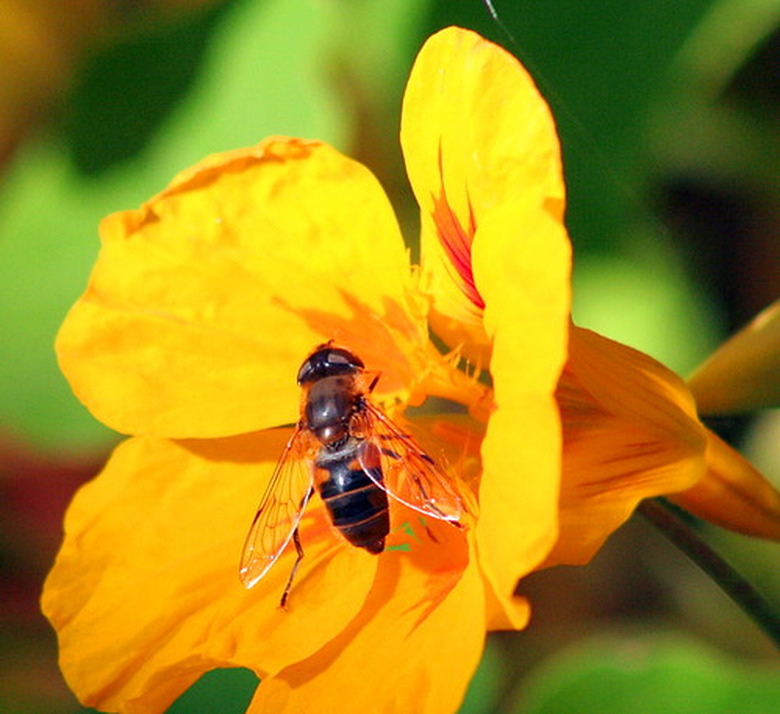Nasturtium Companion Planting
The old-fashioned nasturtium (Tropaeolum minor) is a colorful annual with a sweet fragrance and peppery leaves. Gardeners use the nasturtium to ward off insects and boost their vegetable production. The nasturtium also is edible–try using the leaves and flowers in salads. It's an easy-to-grow plant, thriving in poor soil and full sun.
Cucurbit Family
Nasturtiums planted with cucumbers help improve the vegetables' flavor and growth, as well as deterring aphids, whiteflies and cucumber beetles.
Melons, Squash
Other members of the cucurbit family also are helped by nasturtium. Squash, melons, gourds and pumpkins should be interplanted with nasturtiums to deter squash beetles and borers.
- The old-fashioned nasturtium (Tropaeolum minor) is a colorful annual with a sweet fragrance and peppery leaves.
- The nasturtium also is edible–try using the leaves and flowers in salads.
Other Vegetables
Plant nasturtium around tomatoes, celery, carrots, radishes, potatoes and beans to deter whiteflies, aphids, carrot fly, Colorado potato beetle and the Mexican bean beetle.
Cabbage Family
Broccoli, cabbage, kale, kohlrabi and Brussels sprouts grow better with nasturtiums planted nearby. The flowers keep away Japanese beetles, aphids, cabbage looper and the imported cabbage worm.
Apple Trees
Plant nasturtium under apple trees to repel the codling moth.
Flowers
Nasturtiums also are an excellent addition to your flower garden or patio. Their yellow, gold, orange, peach, mahogany or coral blooms pair well with many heat-loving plants.
In the flower bed, add nasturtiums as a border. Let them spill onto your walkways. Plant railing nasturtiums in front of contrasting marigolds, snapdragons, cleomes, salvia or nicotiana. Or within the bed, nasturtiums would fit in among your anise hyssop, camellias, daisies and hostas.
- Plant nasturtium around tomatoes, celery, carrots, radishes, potatoes and beans to deter whiteflies, aphids, carrot fly, Colorado potato beetle and the Mexican bean beetle.
- Broccoli, cabbage, kale, kohlrabi and Brussels sprouts grow better with nasturtiums planted nearby.
In containers, use the trailing nasturtiums on the edge of the pot. Fill the centers with petunias, ornamental grasses, lamb's ear or geraniums.
You can contrast the nasturtium's bright primary colors with flowers that produce cool-colored blooms of purple, blue or pink. Or let them blend in with other strong reds, oranges and yellows.
In the herb garden, nasturtium's blooms will attract pollinators such as hummingbirds and bees. Its flowers also add spots of colors to a bed that is often mainly green foliage.
